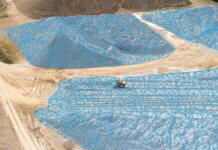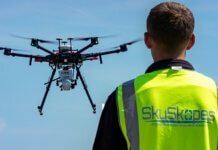
Drone technology, or the creation of unmanned aerial vehicles (UAVs), is experiencing remarkable growth and finding applications in various fields. Unmanned aircraft, commonly known as drones, have become an integral part of our lives. They come in various sizes and functionalities, from small quadcopters for aerial photography to large multi-motor vehicles used in military, commercial, and scientific endeavors.
Key Components of Drones:
- Platform: The physical structure of a drone, including its body, motors, and propellers. Platforms can vary from multirotors to fixed-wing designs. For a deeper understanding of drone aerodynamics, you can refer to "Drones: Design, Build, Fly" by Curtis W. Lee.
- Autopilot and Navigation System: These components play a crucial role in drone control and determining its location. Details about GPS and inertial measurement devices can be explored on the Association for Unmanned Vehicle Systems International (AUVSI) website.
- Power Source: Batteries and other energy sources provide electrical power to a drone. The latest battery technologies, including lithium-polymer batteries, help extend flight duration, as discussed in the "IEEE Transactions on Robotics".
- Cameras and Sensors: Many drones are equipped with cameras and sensors for various missions. Infrared camera sensors, for instance, are used for thermal imaging. You can find more information on different sensor types and their applications on the DroneDeploy Blog.
- Communication System: This component facilitates communication between the drone and the operator. Next-generation communication technologies, such as 5G, significantly improve data transmission between drones and operators, as discussed on the Federal Aviation Administration (FAA) website.
Technological Trends in Drone Technology:
- Artificial Intelligence and Machine Learning: Advancements in artificial intelligence and machine learning enable drones to make autonomous decisions and perform complex tasks, such as object recognition. For a deeper understanding of these technologies, consider taking the "Introduction to Autonomous Robots" specialization on Coursera.
- Improved Batteries: Advanced battery technologies increase drone flight duration, expanding their range of applications. This trend is discussed on the UAV Coach website.
- Collision Avoidance Systems: The development of advanced sensors and collision avoidance algorithms allows drones to navigate around obstacles. Additional information can be found on DroneLife.
- Wireless Charging: Wireless charging technologies promise to make drone recharging more convenient and productive.
- Next-Generation Networks: 5G and other communication technologies enhance the connection between drones and operators. Various aspects of communication are discussed on the Federal Aviation Administration (FAA) website.
Applications of Drones:
- Photography and Videography: Drones are used to create stunning aerial photos and videos. You can learn about modern trends in aerial photography from articles on the DroneDeploy Blog.
- Agriculture: Drones assist farmers in monitoring crop conditions and optimizing crop management. Specialized courses and information on the latest technologies are available on the UAV Coach website.
- Environmental Research and Monitoring: Drones are used for studying nature, forests, and oceans. Details about their environmental applications can be found in research articles and on relevant websites.
- Delivery Services: Some companies are exploring the use of drones for delivering medical supplies and other goods to remote areas.
- Military Applications: Drones are used for reconnaissance, surveillance, and military operations, enhancing national security.
If you want to learn more about drones and technologies, visit our partners' website. It's a fascinating resource for drone enthusiasts and professionals. Click here to explore their website.








